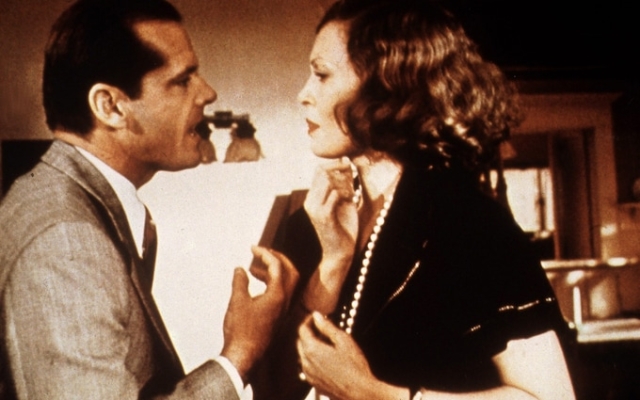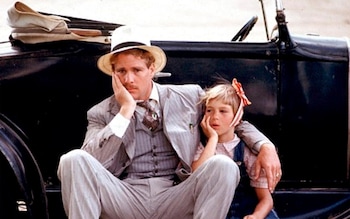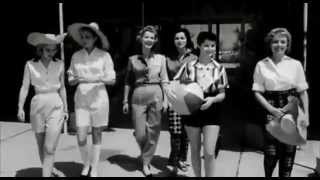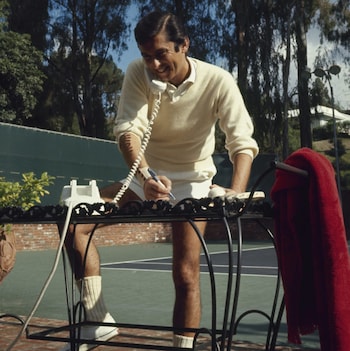 Jack Nicholson and Faye Dunaway in Chinatown Photo: Alami
Jack Nicholson and Faye Dunaway in Chinatown Photo: Alami
Francis Ford Coppola didn't expect Robert Evans to be particularly respectful at showing. But even he did not foresee that he would end up in a hospital bed.
It was 1971, and Coppola was showing an early version of The Godfather to his bosses at Paramount, a group that included Evans, the studio's eccentric production executive who would go on to helm some of the studio's greatest projects. movies ever made by Hollywood. Coppola, then 32, was just finishing one of the first of them, and the 41-year-old Evans fought with him on virtually every major creative decision he made while making it.
First there was casting. For the lead role of Michael Corleone, Coppola wanted the relatively unknown Al Pacino; Evans lobbied for an established star such as Warren Beatty or Robert Redford. Then there was Marlon Brando. Evans called the performance of the now iconic «Look how they killed my boy» monologue «the most acted and worst acted scene I have ever seen.»
Their final battlefield was editing. Evans had injured his back a few days earlier, but was so determined not to give an inch that he had his butler take him to the studio in a motorized crib. He also dressed for the occasion. In Raging Riders, Raging Bulls, critic Peter Biskind's landmark account of 1970s Hollywood, he describes Evans's outfit of «fine black silk pajamas and black velvet slippers with gold fox brocade on the toes.»

Coppola later recalled hearing the whirring of the engine during scenes Evans found boring when he lowered the tilt mechanism down to take a nap. Meanwhile, screenwriter Robert Towne, who helped create the climactic scene between Brando and Pacino, watched the bizarre pantomime with dismay. “If this man is running a studio,” Biskind describes his thoughts, “then this industry must be in big trouble.”
But this was not so: quite the opposite. In fact, today's Paramount—the only independent studio from Hollywood's golden age not owned by a mega-conglomerate—is now in hot water after owner Shari Redstone derailed a months-in-the-making $2.3 billion merger with Skydance. Media, it was at that moment that the deal was expected to be signed. The studio, which made a name for itself with large-scale theatrical releases as well as cable and network television but has found the streaming era limiting its lunch, couldn't do without some of Evans' magic.
 The Magic Man: Robert Evans in front of Paramount Studios. Photo: J. Emilio Flores/Corbis, Getty Images
The Magic Man: Robert Evans in front of Paramount Studios. Photo: J. Emilio Flores/Corbis, Getty Images
Yes, Evans may have been a walking Hollywood cliché, with a ridiculous 16-room house in Beverly Hills, an Olympian sex life, a mania for partying (the startier the better) and cocaine use that could give a rhinoceros heart failure. Yes, he married seven times — once to Ali MacGraw, one of the hottest young actresses, in between working with her on Goodbye Columbus and Love Story. And yes, he once found himself at the center of a murder-for-hire scandal after one of his producing partners was killed by a drug dealer. (At the subsequent trial, the dealer — an ex-girlfriend — insisted that Evans was not involved.)
But behind the teak leather and Persil teeth was enough brains and guts to lift Paramount out of its historic slump and into a mini-golden age. During his eight years as head of production, he oversaw The Godfather Parts I and II, Rosemary's Baby, The Italian Job, Paper Moon, A New Leaf, The Conversation, The Odd Couple, Harold & Maude, True Grit, Serpico, The Great Gatsby. Oh, and Chinatown, written by one Robert Towne, who apparently overcame his misgivings about Evans when he came to him to make a script deal shortly after a night in black silk pajamas. After Chinatown, Evans left Paramount to work on his own, but was unable to replicate the breakthrough series.
 Tatum O'Neal and Ryan O'Neal in Paper Moon, 1973. Photo: Pictorial Press Ltd/Alamy Stock Photo < p>Incredibly, he had no experience as a producer other than pretending to be one. A former child voice actor, he came to Hollywood in the 1950s to act in films, and his first credited role was as legendary MGM production executive Irving Thalberg in The Man of a Thousand Faces.
Tatum O'Neal and Ryan O'Neal in Paper Moon, 1973. Photo: Pictorial Press Ltd/Alamy Stock Photo < p>Incredibly, he had no experience as a producer other than pretending to be one. A former child voice actor, he came to Hollywood in the 1950s to act in films, and his first credited role was as legendary MGM production executive Irving Thalberg in The Man of a Thousand Faces.
Legend has it that he was chosen after Thalberg's ex-wife, Norma Shearer, spotted him lounging by the pool of the Beverly Hilton Hotel. And this story rings true, since Evans, who was 36 at the time, was popular with his wives. In his book, Reckless Riders, Raging Bulls, Biskind describes how the French wife of then-studio owner Charles Bluedorn persuaded her husband to hire him. “He’s great,” she reportedly told him. “We need a handsome and sexy guy to lead the company.”
So he did. The appointment, Biskind notes, was seen by many as «strange even by Hollywood standards.» But there was a mad alchemy to it that worked. Evans had a gift for preserving talent and a habit of betting big on talented young directors who had just experienced flops. And while he often fought with his creatives, he just as often supported them with all his might. In Paper Moon, he allowed director Peter Bogdanovich to shoot in black and white, without discussing the decision with another person in the studio, with the exception of his number two (and future Variety editor) Peter Barth.

Evans' tenure may have been chaotic, but he restored Paramount to a sense of purpose that had been lost when the studio and production business was disbanded following a high-profile court case in the late 1940s. Founded in 1912 as the Famous Players Film Company, the studio quickly gained a reputation for its signature old-time sophistication and glamor thanks to the help of suave expatriate directors such as Joseph von Sternberg and Ernst Lubitsch. Almost single-handedly, Evans polished that shine again.
This ambition and cosmopolitanism have little in common with Paramount in the 21st century, whose creative philosophy was essentially «throw a lot of money at Tom Cruise.» To be clear, there are many worse creative philosophies than this, but it only works if your clients pay back. And as the average box office performance of last year's Mission: Impossible: Deadly Reckoning Part One demonstrated, even having the biggest movie star on the planet ride a motorcycle off a cliff isn't enough to get through a rough patch. Therefore, any sale — if and when it finally happens — will most likely be followed by a complete artistic rethink.
In truth, this update couldn't come soon enough. Paramount has been suffering from creative drift since 2009, when they lost Marvel Entertainment to Disney. In 2012, with the latter studio finding success with Avengers Assemble—and establishing itself as the dominant force in Hollywood for a decade to come—Paramount ended up sitting out the summer entirely, hitting its two biggest titles, G.I. World». War Z, next year.
 Player: Robert Evans on his home tennis court in 1969. Photo: Getty
Player: Robert Evans on his home tennis court in 1969. Photo: Getty
Both the films themselves (which were terrible) and the fact that they were not released smacked of management's troubling thinking: the kind of thinking Evans-era Paramount would not have recognized. However, for now – and given the current climate of uncertainty, presumably for the foreseeable future as well – the ethos appears to have endured. The studio's three current CEOs are the kind of hardened executives you wouldn't imagine showing up to work in fancy nightwear or testifying at a murder trial. One of them, Brian Robbins, was once a director, although his directorial credits include eight-time Golden Raspberry Award nominee Norbit.
That leaves the vacancy of the current generation's Robert Evans open, although It is admittedly impossible to predict who exactly. there might be such a figure (and would today's wary HR managers allow him into the booth).
However, the fact remains that no one expected who Robert Evans of the Robert Evans generation would turn out to be. But how lucky that Hollywood was then bold and crazy enough to imagine that Robert Evans could become it.


























































Свежие комментарии